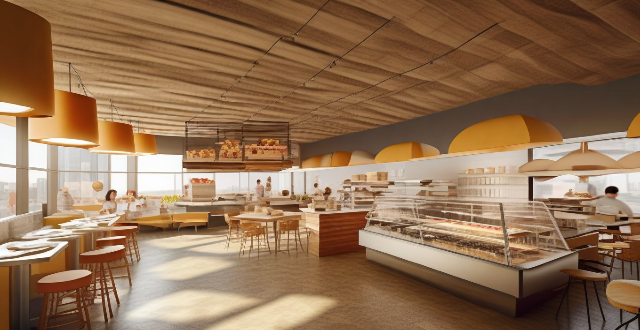Themed restaurants integrate their unique concepts into marketing strategies by employing consistent branding, targeted advertising, engaging content, experiential events, strategic partnerships, and customer engagement initiatives. They achieve this through various methods including themed logos, creative naming, storytelling ads, promotional materials with thematic elements, educational and interactive content, special occasion promotions, interactive experiences, cross-promotion, community involvement, themed rewards, and photo contests. By weaving the theme throughout all aspects of their marketing, these restaurants create a cohesive brand identity that attracts and retains customers fascinated by the immersive experience they offer.

How Themed Restaurants Incorporate Their Themes into Marketing Strategies
Themed restaurants are establishments that use a specific concept or idea as the foundation for their ambiance, menu, and overall customer experience. To effectively market themselves, these restaurants must integrate their themes into every aspect of their marketing strategies. Here's how they do it:
Branding
Logo and Visual Identity
- Color Palette: Reflective of the theme, creating a visual connection.
- Typography: Often customized to match the era or style of the theme.
- Iconography and Symbols: Directly related to the theme, making the brand instantly recognizable.
Naming and Language
- Creative Naming: Names often play on words or are directly inspired by the theme.
- Copywriting: Uses language that aligns with the theme, whether it's archaic for a medieval theme or modern slang for a trendy concept.
Advertising
Targeted Ad Campaigns
- Niche Audiences: Ads are tailored to appeal specifically to fans of the theme.
- Storytelling: Ads tell a story that draws from the theme to capture attention.
Promotional Material
- Flyers and Posters: Designed with thematic elements to catch the eye.
- Social Media: Regular posts with content that matches the theme, engaging followers with behind-the-scenes stories, thematic decorations, and costumed staff.
Content Marketing
Blogs and Articles
- Educational Content: Discussing the history or interesting facts about the theme.
- Recipes and Food Features: Showcasing food items that are signature to the theme.
Videos and Media
- Thematic Music and Visual Effects: Used in promotional videos to enhance the atmosphere.
- Interactive Content: Quizzes or games related to the theme for user engagement.
Events and Experiences
Special Occasion Promotions
- Theme-Based Holidays: Celebrating relevant holidays with special menus or events.
- Costume and Decorations: Staff dressed in theme-appropriate attire and restaurant decorated accordingly.
Interactive Experiences
- Role-Playing Servers: Waitstaff engage with customers within the context of the theme.
- Themed Entertainment: Live performances or activities that align with the theme.
Collaborations and Partnerships
Brand Synergy
- Cross-Promotion: Partnering with brands that complement the theme for mutual benefit.
- Limited Edition Products: Collaborating with other companies to create themed products.
Community Involvement
- Sponsorships and Charity Events: Aligning with causes or events that resonate with the theme.
- Local Partnerships: Working with local businesses to create a network of themed experiences.
Customer Engagement
Loyalty Programs
- Themed Rewards: Offering themed gifts or discounts for loyal customers.
- Membership Perks: Exclusive experiences for members that are tied to the theme.
User-Generated Content
- Photo Contests: Encouraging customers to share photos taken at the restaurant.
- Review Incentives: Rewarding customers for sharing their themed dining experiences online.
In summary, themed restaurants incorporate their unique concepts into marketing strategies through consistent branding, targeted advertising, engaging content, experiential events, strategic partnerships, and customer engagement initiatives. By weaving the theme throughout all aspects of their marketing, these restaurants create a cohesive brand identity that attracts and retains customers fascinated by the immersive experience they offer.